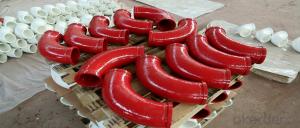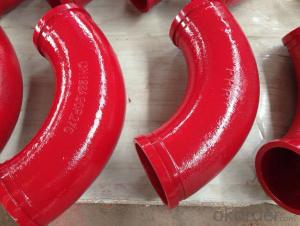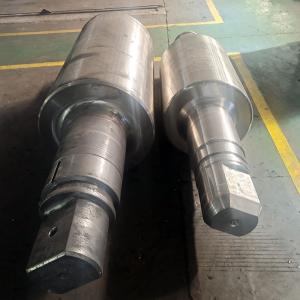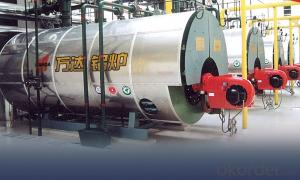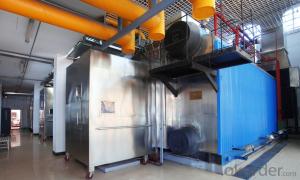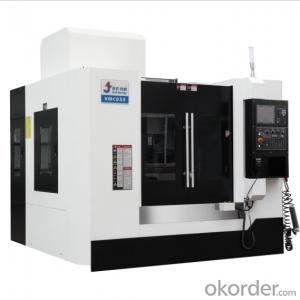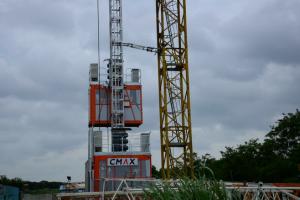CONCRETE DELIVERY ELBOW PM TYPE 90DEG R275 DN112
- Loading Port:
- Tianjin
- Payment Terms:
- TT OR LC
- Min Order Qty:
- 100 pc
- Supply Capability:
- 10000 pc/month
OKorder Service Pledge
OKorder Financial Service
You Might Also Like
concrete pump elbow table
Wear-resistant Single or Double Concrete Pump Elbow | |||||||
Type | Singe Elbow | Double Elbow | |||||
Model | DN125 | DN150 | DN175 | DN125 | |||
Material | Casting Steel ,ST52 | Inside | 40Cr | Outside | |||
Size | R275*90° | R275*90°+110 | 36° | F2000 | R275*90° | R275*90°+110 | |
R275*45° | R275*90°+211 | R400*30° | A3000 | R275*45° | R275*90°+211 | ||
R275*25° | R275*90°+411 | R400*45° | 471B | R275*25° | R275*90°+411 | ||
R275*20° | R275*90°+424 | R400*30° | 571B | R275*20° | R275*90°+424 | ||
R275*15° | R275*45°+170 | R488*90° | A1000 | R275*15° | R275*45°+170 | ||
R180*90° | R275*45°+310 | R500*90 | C1000 | R180*90° | R275*45°+310 | ||
R232*60° | R275*45°+310 | R280*90° | B2000 | R232*60° | R275*45°+310 | ||
R240*36° | 20°Lengthen | R240*36° | 20°Lengthen | ||||
R240*30° | 25°+740 | R240*30° | 25°+740 | ||||
R240*15° | 40°Zoomlion | R240*15° | 40°Zoomlion | ||||
R385*29° | R385*29° | ||||||
R315*33° | R315*33° | ||||||
Technic | Forged | ||||||
Average life | 25,000cubic | 50,000cubic | |||||
Appliciation | Used in concrete transport in construction work | ||||||
1.product profile:The double layer concrete pump elbow is developed by ourselves through new
technology and process.
2.characteristic:the inner layer of this concrete pump elbow undergoes heat treatment,and then the rigitiry can reach 62-65HRC.
3.characteristic:the outer layer of the concrete pump elbow possess good toughness properties
to protect the inner layer,so the security of the elbow is improved.
4.life:the experiment done abroad shows that the life of our concrete pump elbow can reach 35000-50000cbm,got the customers' praise
5.Beside the double layer concrete pump elbow,we produce all kinds of concrete pump parts,
straight pipe hose flange coupling and so on.
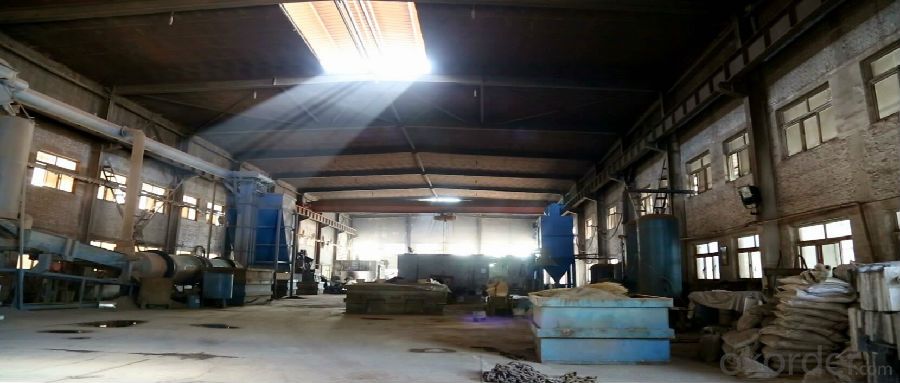
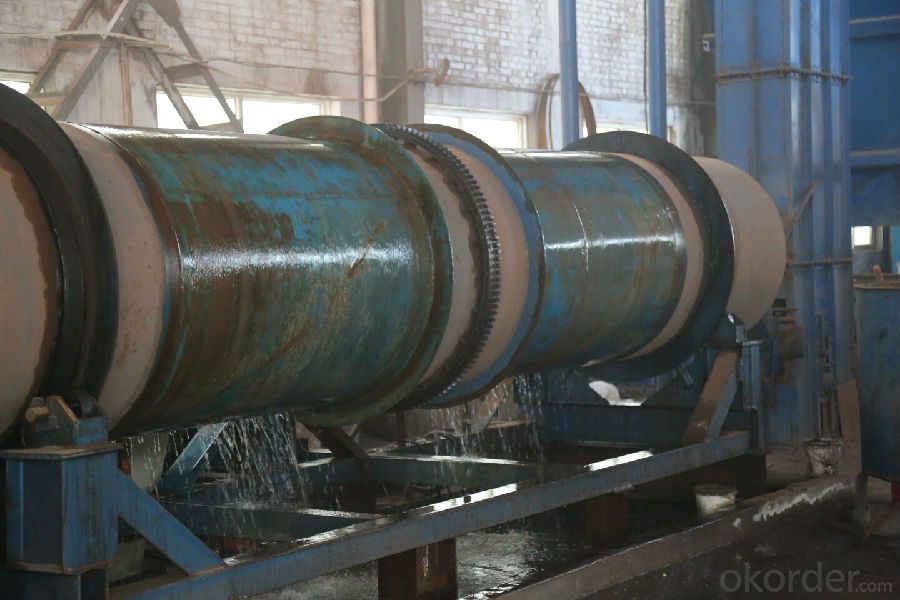

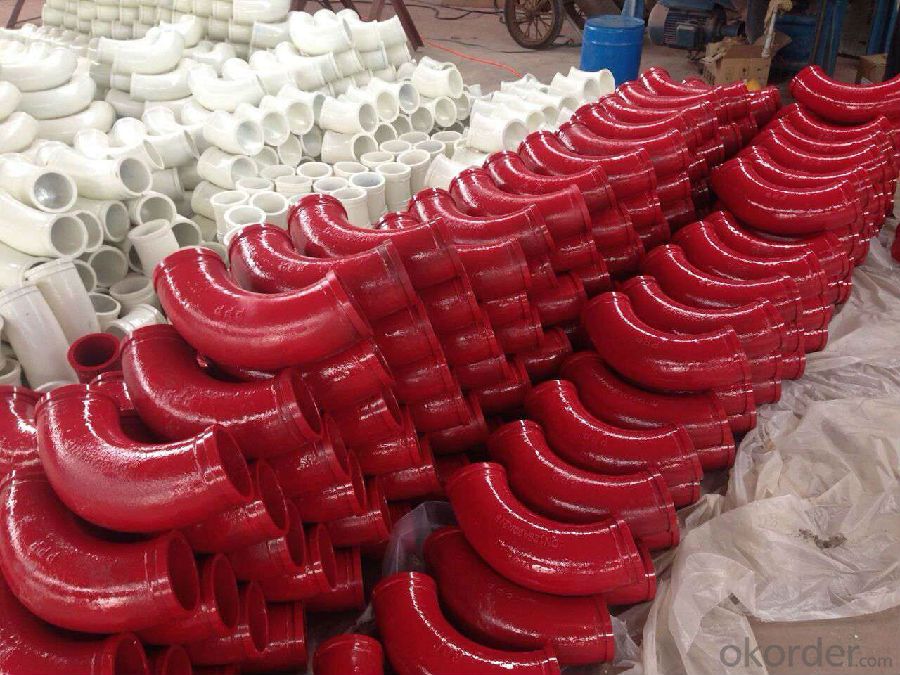
- Q:How can a faulty electric motor affect the pump's performance?
- A faulty electric motor can have a significant impact on the pump's performance. Firstly, the motor is responsible for providing the necessary power to drive the pump. If the motor is faulty, it may not be able to generate the required amount of power, leading to a decrease in the pump's performance and overall efficiency. This can result in reduced flow rates and lower pressure output, leading to inadequate functioning of the pump. Moreover, a faulty motor can also lead to issues such as increased energy consumption and overheating. If the motor is not functioning properly, it may draw excessive electrical current, causing higher energy usage and increased operational costs. Additionally, an overheating motor can result in damage to the pump and other related components, further impacting performance and potentially leading to costly repairs or replacements. Furthermore, a faulty motor can also impact the reliability and longevity of the pump. Continuous operation with a faulty motor can put excessive strain on the pump, leading to premature wear and tear, increased maintenance requirements, and a shorter lifespan. This can result in frequent breakdowns, downtime, and a decrease in overall productivity. Overall, a faulty electric motor can have various negative effects on the pump's performance, including lower flow rates, reduced pressure output, increased energy consumption, overheating, and decreased reliability. It is crucial to regularly inspect and maintain motors to ensure their optimal functioning and avoid any detrimental impacts on the pump's performance.
- Q:How can a faulty battery affect the operation of the pump?
- The operation of a pump can be significantly affected by a faulty battery. Firstly, inadequate power supply from a faulty battery can lead to slow or weak pumping action. This can result in the pump's inability to generate the required pressure or flow rate, causing inefficient or ineffective operation. Moreover, intermittent power supply caused by a faulty battery can cause inconsistent pumping action, with the pump starting and stopping unpredictably. These interruptions can create inefficiencies, diminish the pump's performance, and potentially harm the equipment or system being operated. Furthermore, a faulty battery may have a limited charge retention capacity. This can restrict the pump's operating time, necessitating frequent recharging or battery replacement. In situations where continuous or prolonged pump usage is necessary, a faulty battery can disrupt operations, resulting in downtime and reduced productivity. Additionally, the overall lifespan of the pump can be affected by a faulty battery. If the battery fails to consistently provide the required power, the pump may experience strain or excessive wear, potentially shortening its operational life. In conclusion, a faulty battery can have numerous unfavorable effects on the operation of a pump, including reduced performance, inconsistent pumping action, limited operating time, potential damage, and decreased equipment lifespan. It is crucial to conduct regular maintenance and promptly replace faulty batteries to ensure optimum pump performance and longevity.
- Q:How do I properly maintain and replace hydraulic valves in concrete pump spare parts?
- To ensure the smooth operation and long life of your concrete pump spare parts, it is crucial to properly maintain and replace the hydraulic valves. Here are some guidelines to follow: 1. Conduct Regular Inspections: Regularly inspect the hydraulic valves for wear, damage, or leaks. Look for visible defects like cracks, corrosion, or other signs of deterioration. It is important to identify and address any issues early on to prevent further damage. 2. Maintain Cleanliness: Keep the hydraulic valves clean to prevent dirt, debris, or contaminants from entering the system. Use an appropriate cleaning agent and a lint-free cloth to wipe the valves and remove any buildup. 3. Ensure Proper Lubrication: Proper lubrication is vital for the smooth functioning of hydraulic valves. Consult the manufacturer's guidelines to determine the suitable lubricant and the recommended lubrication schedule. Apply the lubricant as instructed. 4. Promptly Replace Damaged Valves: If a hydraulic valve is beyond repair or excessively worn out, it is crucial to replace it promptly. Consult the equipment's manual or seek guidance from the manufacturer to identify the correct replacement valve. Make sure the replacement valve matches the required specifications for your concrete pump. 5. Seek Professional Assistance: While operators can handle some maintenance tasks, it is advisable to seek professional assistance for complex maintenance and replacement procedures. Professional technicians possess the expertise and knowledge to handle hydraulic valves safely and effectively. 6. Prioritize Safety: Always adhere to proper safety protocols when working with hydraulic valves. Release all pressure and fully depressurize the system before attempting any maintenance or replacement. Wear appropriate personal protective equipment, such as gloves and safety goggles, to safeguard yourself from potential hazards. In conclusion, regular maintenance, timely replacement, and adherence to safety guidelines are crucial for maintaining and replacing hydraulic valves in concrete pump spare parts. By following these steps, you can ensure the reliable and efficient operation of your equipment.
- Q:Can concrete pump spare parts be replaced individually, or should they be replaced as a set?
- Typically, individual replacement of concrete pump spare parts is possible, eliminating the need to replace the entire set. This advantageous approach enables economical maintenance and repair of the pump. By solely replacing the faulty or worn-out part, operators can ensure the pump's optimal functionality without incurring unnecessary expenses. Furthermore, individual part replacement offers enhanced flexibility and customization since different components wear out at varied rates based on their usage. However, it is worth noting that some manufacturers may recommend replacing certain parts as a set or in specific combinations to achieve optimal performance. Consequently, it is always advisable to consult the manufacturer's guidelines or seek professional advice when replacing spare parts for concrete pumps.
- Q:What are the indications of a faulty concrete pump hydraulic motor?
- Some indications of a faulty concrete pump hydraulic motor may include decreased pumping efficiency, irregular or inconsistent flow of concrete, unusual noises or vibrations, leaks or drips in the hydraulic system, excessive heat in the motor, or difficulty in starting or stopping the motor.
- Q:What are the signs of a malfunctioning hydraulic oil cooler?
- Some signs of a malfunctioning hydraulic oil cooler include overheating of the hydraulic system, decreased performance and efficiency of the equipment, increased hydraulic fluid leakage, abnormal noises or vibrations, and visible signs of coolant or oil leakage around the oil cooler.
- Q:What is the function of a concrete pump hydraulic accumulator?
- The operation of a concrete pump heavily relies on a crucial component known as the hydraulic accumulator. Its primary objective is to store and release hydraulic energy, which is instrumental in maintaining a seamless and uninterrupted flow of concrete during pumping activities. The hydraulic accumulator acts as a reservoir for pressure, being directly connected to the hydraulic system of the concrete pump. When the pump is not actively engaged, the accumulator stores hydraulic fluid that is pressurized. This accumulated energy can be unleashed when necessary, particularly during the pumping process, effectively providing supplementary power to the main hydraulic system. During concrete pumping, the accumulator proves invaluable in upholding a steady stream of concrete by compensating for any fluctuations in hydraulic system pressure. It functions as a buffer, absorbing any excessive pressure and subsequently releasing it back into the system whenever required. This mechanism is pivotal in averting sudden surges or drops in pressure, which could potentially lead to irregular concrete flow or even inflict damage upon the pump. Moreover, the hydraulic accumulator also contributes to reducing energy consumption and optimizing the overall efficiency of the concrete pump. By storing and reusing energy, it diminishes the reliance on a constant power supply from the primary hydraulic system, subsequently easing the burden on the pump's engine and enhancing fuel efficiency. To summarize, the concrete pump hydraulic accumulator serves the paramount purpose of storing and releasing hydraulic energy, guaranteeing a consistent and uninterrupted flow of concrete during pumping activities. Additionally, it plays a significant role in energy efficiency and safeguarding the pump from potential harm.
- Q:How often should concrete pump control levers be inspected and replaced?
- Regular inspections should be conducted on concrete pump control levers to ensure they are in proper working order. The frequency of these inspections and any necessary replacements will depend on various factors, such as usage levels, environmental conditions, and the quality of equipment maintenance. As a general rule, it is recommended to inspect the control levers at least once a year. This inspection should involve a thorough examination of the lever mechanism to check for any signs of wear, damage, or malfunction. It is also advisable to inspect the levers after any major repairs or maintenance to ensure they have been correctly reinstalled and are functioning properly. If any issues are identified during the inspection, it is crucial to address them promptly. Depending on the severity of the problem, repairs or replacements may be required. Minor repairs can often be carried out on-site, while more significant issues may necessitate the assistance of a professional technician. Regular maintenance, including lubrication and cleaning, is important for extending the lifespan of the control levers. Following the manufacturer's maintenance and usage guidelines can also help prevent premature wear and damage. Ultimately, the frequency of inspections and replacements may vary based on specific circumstances. It is advisable to consult the equipment's manual or the manufacturer for precise recommendations regarding the maintenance and replacement of the control levers.
- Q:How do I properly maintain and replace hydraulic pumps in concrete pump spare parts?
- Proper maintenance and replacement of hydraulic pumps in concrete pump spare parts involve a few key steps. Firstly, it is crucial to regularly inspect the hydraulic pump for any signs of wear, leaks, or damage. This includes checking the fluid levels, filters, and hoses. Secondly, following the manufacturer's guidelines, ensure that the hydraulic pump is regularly serviced and that the recommended maintenance tasks are performed on schedule. This includes changing the hydraulic fluid, replacing filters, and lubricating moving parts. Lastly, when it comes to replacing hydraulic pumps, it is important to use genuine and compatible spare parts that are recommended by the manufacturer. Additionally, it is advisable to seek professional assistance or consult the manufacturer's instructions to ensure proper installation and alignment of the new pump.
- Q:Are there any specific guidelines for the installation of hopper components or agitators in concrete pump spare parts?
- Concrete pump spare parts have specific guidelines for the installation of hopper components and agitators. These guidelines aim to ensure the equipment's proper functioning and safety. Here are some key guidelines to consider: 1. Manufacturer's instructions: Carefully read and understand the manufacturer's instructions for installing hopper components and agitators. These instructions provide specific details and steps for installation. 2. Use the right tools: Utilize appropriate tools and equipment as recommended by the manufacturer. This includes employing the correct size wrenches, bolts, and other necessary tools for the installation process. 3. Clean and level surface: Prior to installation, ensure the surface is both clean and level. This promotes proper alignment and functioning of the parts. 4. Check for damages or defects: Conduct a thorough inspection of the hopper components and agitators for any damages or defects prior to installation. If any issues are found, address them before proceeding with the installation. 5. Align and position correctly: Adhere to the manufacturer's recommendations for aligning and positioning the hopper components and agitators. Improper alignment may result in malfunctioning or premature wear of the parts. 6. Secure all connections: Ensure that all connections, such as bolts, nuts, and clamps, are securely fastened according to the manufacturer's instructions. Loose connections can lead to accidents or damage to the equipment. 7. Test the equipment: After installation, it is crucial to test the equipment to ensure proper functioning. Follow the manufacturer's guidelines for testing and make any necessary adjustments if required. 8. Regular maintenance and inspection: Once the hopper components and agitators are installed, it is vital to regularly inspect and maintain them. This includes cleaning, lubricating, and replacing any worn-out parts as recommended by the manufacturer. By adhering to these guidelines, you can ensure the correct installation of hopper components and agitators in concrete pump spare parts, promoting efficient operation and prolonging the equipment's lifespan.
1. Manufacturer Overview |
|
|---|---|
| Location | |
| Year Established | |
| Annual Output Value | |
| Main Markets | |
| Company Certifications | |
2. Manufacturer Certificates |
|
|---|---|
| a) Certification Name | |
| Range | |
| Reference | |
| Validity Period | |
3. Manufacturer Capability |
|
|---|---|
| a)Trade Capacity | |
| Nearest Port | |
| Export Percentage | |
| No.of Employees in Trade Department | |
| Language Spoken: | |
| b)Factory Information | |
| Factory Size: | |
| No. of Production Lines | |
| Contract Manufacturing | |
| Product Price Range | |
Send your message to us
CONCRETE DELIVERY ELBOW PM TYPE 90DEG R275 DN112
- Loading Port:
- Tianjin
- Payment Terms:
- TT OR LC
- Min Order Qty:
- 100 pc
- Supply Capability:
- 10000 pc/month
OKorder Service Pledge
OKorder Financial Service
Similar products
New products
Hot products
Related keywords
